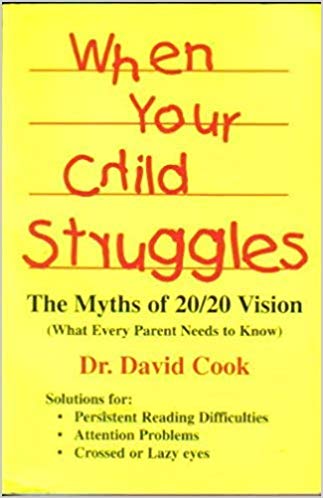It is time for us to retire the Snellen eye chart. After 150 years, surely we have learned there’s more to vision than 20/20 acuity! Yesterday, I mentioned to my brother (who has now decided to use his amblyopia as an excuse for not reading) that maybe he ought to get his two little girls’ vision tested. He and my sister-in-law assured me that their doctor had tested their vision and they are fine. Yep, that’s what my doctor and my optometrist also said and now I understand how UNTRUE it really is! Even if they do test other aspects of vision (which is rare) and detect a possible problem, they don’t refer patients to a developmental optometrist like they should.
Case in point: my experience last year with my regular optometrist who said “Yes, she has a little tracking problem, but she’s FINE.” (Code for “She has vision issues I don’t deal with and I don’t want to lose your business, so I recommend you just ignore it. . .” (See my blog post “It’s more in the family than I thought”) Now, I’m experiencing this yet again with my 11-year-old. I took her in last week for a regular check up and discovered that one eye was under-corrected (which I requested of my regular optometrist last year) and the other was OVER-corrected. So, either her one eye changed A LOT, or something funny is going on. Needless to say, her eyes weren’t functioning well together as a team, so Dr. Davies is going to re-evaluate Darcy this week after she has a week to adjust to the corrected prescription (through a trial pair of contacts). I talked her into trying the vision therapy program on the computer today and she didn’t last long before she told me the picture changed and she couldn’t see what she was supposed to see. Looks like she might be needing therapy too. We’ll know more in a couple of days.
 Once again, the Snellen chart (and an optometrist’s evaluation) failed to detect vision issues that are more than a little problematical. Just because we adapt well to our visual challenges doesn’t mean they don’t exist! I highly recommend that every parent and educator read Dr. David Cook’s book (Amazon link: https://amzn.to/32azvxM) When your child struggles: The myths of 20/20 vision (What every parent needs to know). In this 2004 publication, Dr. Cook outlines the 7 visual abilities necessary for learning: 1. accommodation (focus ability), 2. eye teaming ability, 3. eye movement ability, 4. visual perception ability (understanding what is seen), 5. eye/hand coordination ability, 6. visual imagery ability and 7. 20/20 acuity. The only one that is really tested is the last skill. It’s also the only one that’s corrected by a visit to your regular eye doctor!
Once again, the Snellen chart (and an optometrist’s evaluation) failed to detect vision issues that are more than a little problematical. Just because we adapt well to our visual challenges doesn’t mean they don’t exist! I highly recommend that every parent and educator read Dr. David Cook’s book (Amazon link: https://amzn.to/32azvxM) When your child struggles: The myths of 20/20 vision (What every parent needs to know). In this 2004 publication, Dr. Cook outlines the 7 visual abilities necessary for learning: 1. accommodation (focus ability), 2. eye teaming ability, 3. eye movement ability, 4. visual perception ability (understanding what is seen), 5. eye/hand coordination ability, 6. visual imagery ability and 7. 20/20 acuity. The only one that is really tested is the last skill. It’s also the only one that’s corrected by a visit to your regular eye doctor!
Dr. Cook lists signs to watch for in each of the categories. Highly trained individuals (like your pediatrician or eye doctor) often miss the signs (and I certainly did). How much longer before we demand and facilitate the type of vision screening which will let us know how our children are REALLY seeing? Mere 20/20 (or 20/40)–without stereovision– is no longer good enough for me, so why would I accept it for ANY of my children?
